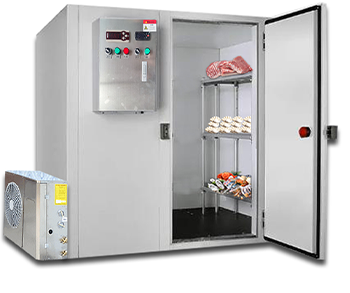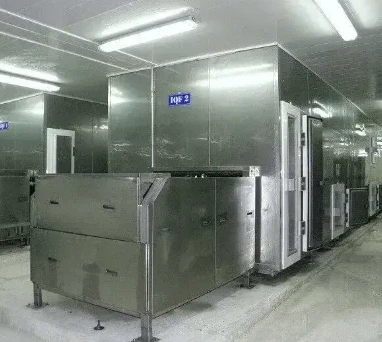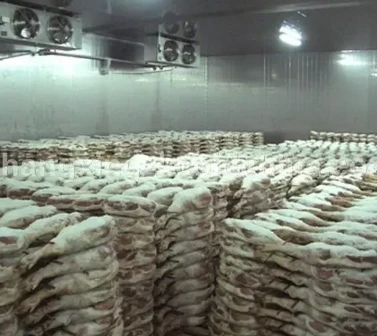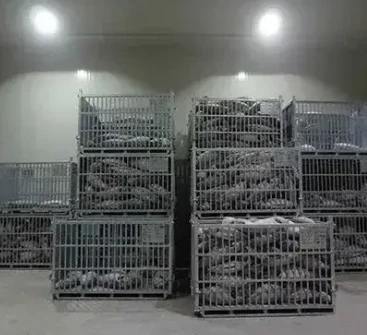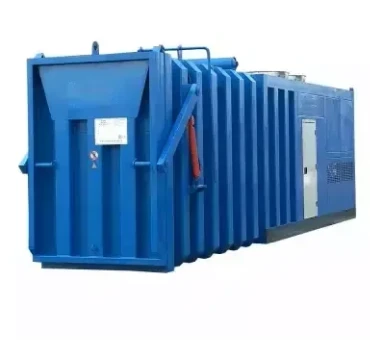But what do you do if your home already has a cold storage room?
In this blog, we’ll tell you everything you need to know about both finished and unfinished cold rooms as well as ways to control moisture and increase ventilation in order to prevent mold.
What are cold storage rooms?
If you’re not already familiar with them, cold storage rooms are those small, closet-sized spaces usually located in the basement or under the front porch of a house. They have no insulation—just unfinished walls and concrete floors.
This is because, back in the day, a cold room’s purpose, as the name implies, was to provide a cool place for storing perishable foods like potatoes and onions (since people didn’t have refrigerators).
These days, however, the need for cold rooms has more or less disappeared, leaving these spaces often ignored, full of junk and a hotspot for hazards like mold.
The problem with cold rooms
Because concrete is a porous material, moisture and air can move through it easily. This makes cold rooms humid and moist—the perfect environment for mold.
Generally speaking, mold is very common in cold storage rooms because these spaces are uninsulated, dark, wet and poorly ventilated—much like basements in general.
Mold thrives in these kinds of environments, especially when it has a source of food. So if you’re storing cardboard boxes or old newspapers and magazines in your cold room, you could actually be fuelling mold growth. For that matter, any wooden shelving, drywall or other porous, organic materials that can become heavily saturated with moisture will worsen the problem.
Fruits And Vegetables Cold Room
How to prevent mold in cold rooms
The main reason why cold rooms often result in major mold problems is that homeowners don’t know how to maintain them properly—they treat cold rooms just like any other room in their house. This is a mistake as cold rooms require special attention and maintenance.
As mentioned before, these spaces are often ignored or used simply for storage purposes. While some homeowners have taken to converting their cold rooms into wine cellars or integrating them into the rest of their basement to maximize living space, most of these DIY projects result in much bigger problems because the renovations aren’t done properly.
In the next section, we’ll describe exactly what goes wrong.
1. Unfinished basement, unfinished cold room
When your basement is completely unfinished, it tends to take care of itself as long as you perform proper maintenance. This includes fixing leaks, controlling humidity, cleaning regularly and not trying to stash too much stuff in it.
In these cases, cold storage rooms don’t usually suffer from condensation issues because the basement air will generally be the same temperature as the air inside the cold room. Rather, the bigger issue is poor ventilation and uncleanliness, both of which contribute to mold growth.
Ventilation is very important in cold rooms because these rooms are typically isolated from the rest of the basement by a closed door, which means airflow is limited. Vents that allow fresh outdoor air to come in are needed to keep moisture levels low, ensure adequate airflow and keep mold at bay.
In addition, if you allow dust to build up in your cold room, not only will it provide food for mold, but it will also absorb moisture from the air, making it that much easier for mold to take hold.
The Solution
The solution here is simple: clean and maintain your cold room regularly, and keep humidity levels under control—whether that means using a dehumidifier, installing vapour barriers or adding an extra vent.
Ideally, you should have two vents in your cold room—one at the top and one at the bottom of the room. This ensures ample air circulation, which will prevent condensation and dry out moisture before it can lead to mold. And make sure to keep your vents clear and clean.
2. Finished basement, unfinished cold room
This is the most common scenario found in homes with cold rooms.
When you install insulation, drywall and flooring in your basement but leave the cold room untouched, what you’re actually doing is creating two rooms with completely different climates, separated by a wall and door with little or no insulation.
The problem with this is that you have not stopped air movement between the finished (heated and insulated) basement and the unfinished cold room. So, when warm air from the basement penetrates the cold room through the door or walls, it encounters a multitude of cold surfaces on which it can condense.
Once the walls get wet, it’s only a matter of time before mold will start growing.
The Solution
If you’re going to finish your basement but leave your cold room unfinished, you need to install an insulated door between the cold room and the basement as well as proper weather-stripping under that door. The ceiling and the dividing walls of the cold room have to be well insulated to prevent warm air from entering and condensing on the walls.
Be persistent—use vapour barriers at every seam to prevent moisture intrusion. The vapour barriers should be installed on the warm side of the insulation; however, when using spray, foam insulation, a vapour barrier is not needed.
Venting directly to the outside is also important if you want to keep the space working effectively. The outer foundation walls are left bare, to allow the cold room to maintain its lower temperature. When finishing a cold room it is crucial that you treat it like an outside space and allow no air leakage between it and your warm house/basement.
3. Finished basement, finished cold room
While the idea is great, in most cases, these renovations result in huge problems because many homeowners attempt the renovations themselves without knowing the fundamental principles of construction.
This is always a bad plan unless, of course, you’re a professional contractor. Common mistakes that lead to even worse problems include drywall attached directly to concrete, bad insulation choices and improperly installed vapour barriers.
All of this leads to moisture problems—high humidity, poor ventilation, condensation and, last but not least, mold.
Condensation will happen in much the same way as it will in an unfinished cold room in a finished basement. If the cold room isn’t 100% sealed and airtight, warm air from the basement room will push its way into the cold room and condense on cold surfaces…even with a vapour barrier in place.
When it comes to ventilation, without prior knowledge of procedures for closing off and insulating ventilation holes, homeowners have a slim chance of doing it right. They risk letting cold air escape into other parts of your home and even animals intruding in vents and shafts.
The Solution
Unfortunately, there is not much you can do about an improperly finished cold room—wet or damaged materials have to be removed and the room taken back to bare concrete so that it can be finished properly, from the beginning.
A professional contractor will seal the floor; insulate and seal ventilation holes (from the inside and outside); and insulate the outer concrete walls (with closed pore styrofoam blocks or spray foam insulation).
After insulation, you will need a vapour barrier between the outside concrete and the inside space. The importance of installing the vapour barrier properly cannot be overstated! That’s why you should always stick to professionals.
Once the room is wrapped properly, drywall can be installed and the rest of the work can proceed as with any regular renovation. Keep in mind that if your basement has a history of being humid, you need to implement some sort of moisture control measures, such as using a dehumidifier.
Conclusion
We’re sure you’ve all formed your own opinion about cold storage rooms. In our professional experience, the amount of effort that goes into maintaining these under-used rooms is not worth the benefits they provide.
However, if you are going to finish your cold room, do it properly. And if you decide to keep your cold room as is, remember that it’s much easier (and cheaper!) to take proper care of it now than to deal with a major mold contamination later on.
In these cases, a complete mold remediation is necessary. You’ll be required to remove all drywall and insulation as well as all affected framing, strapping, shelving, boxes, wood, carpet, food and other belongings. It also requires the use of anti-fungal cleaners, specialized equipment and strict procedures for the safe and effective elimination of mold.
When dealing with mold incold storage rooms, your best bet is to call a certified mold professional, who will set up proper containment of the contaminated area in order to prevent the mold from spreading into other parts of your home.
Now that you have all the information you need about cold storage rooms, the choice is yours!













































































































